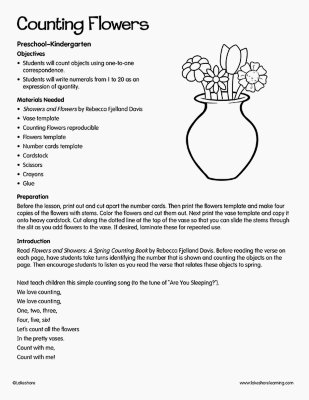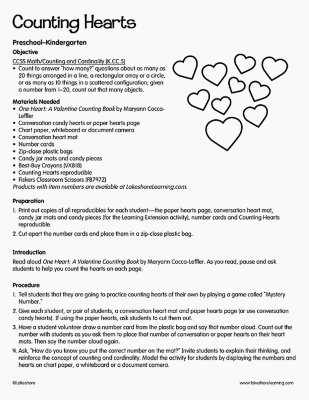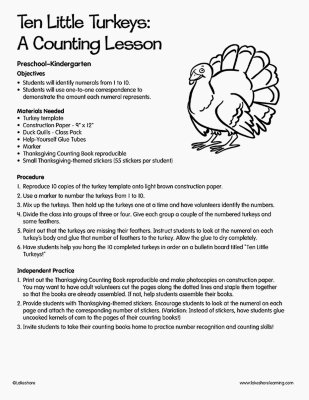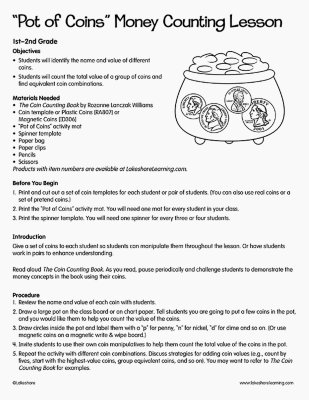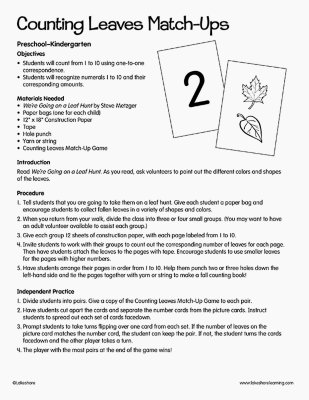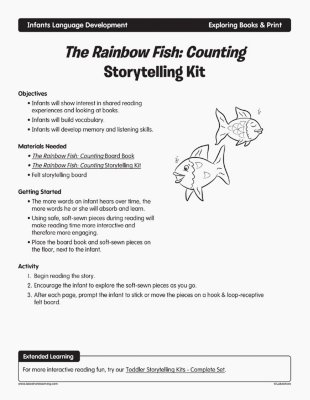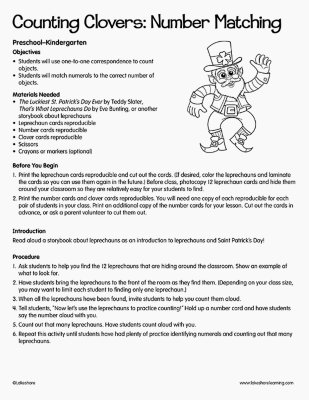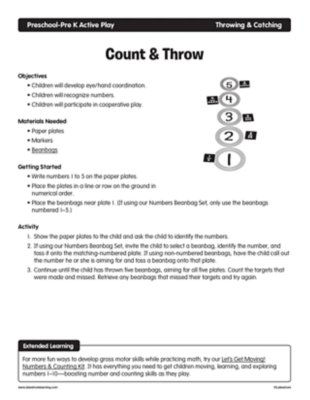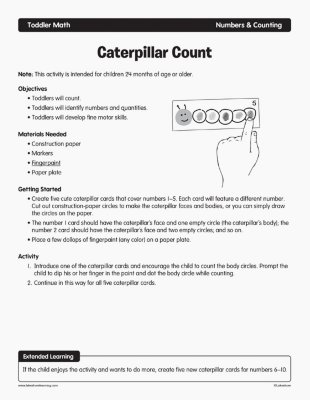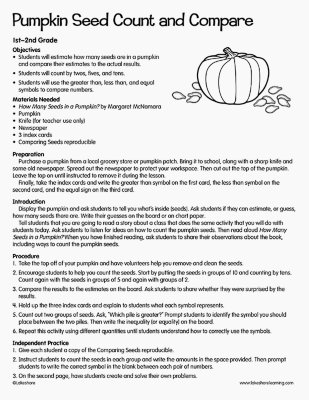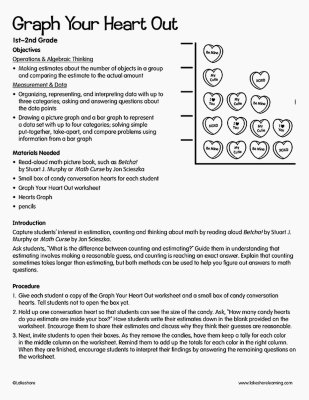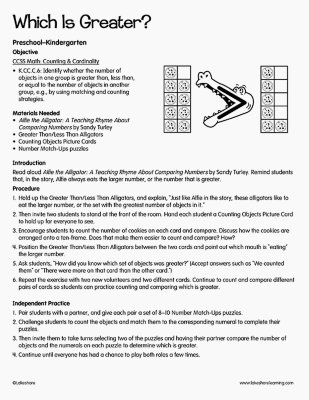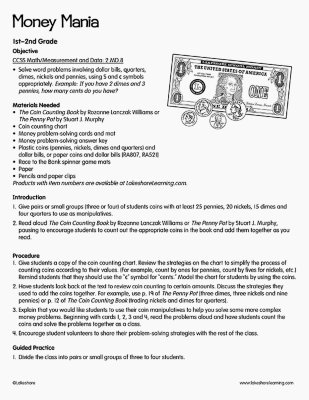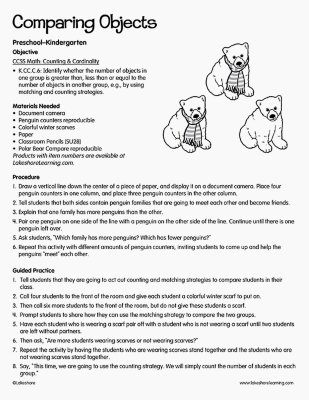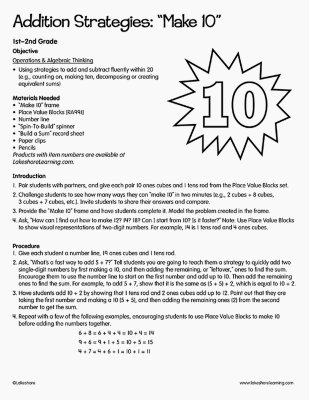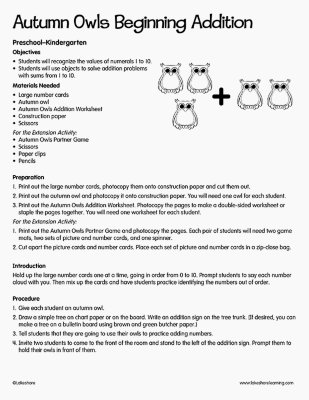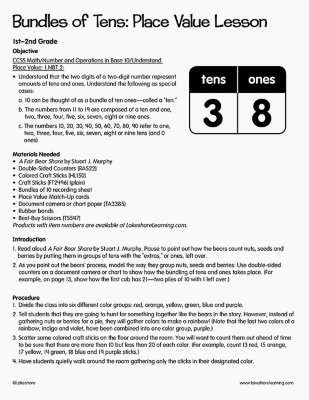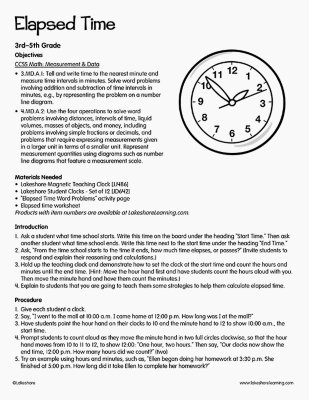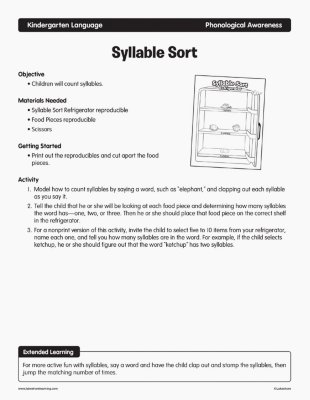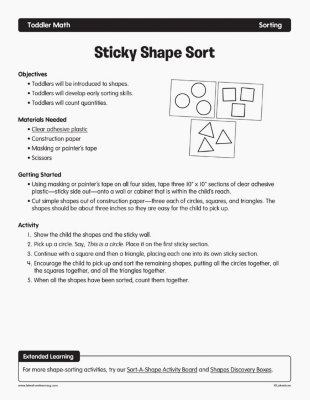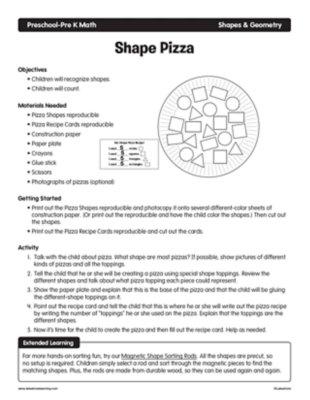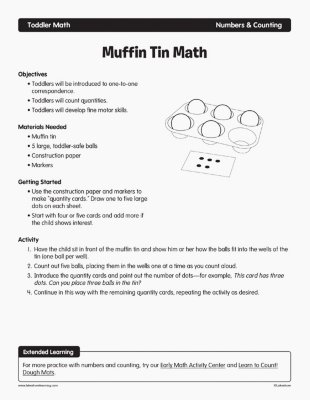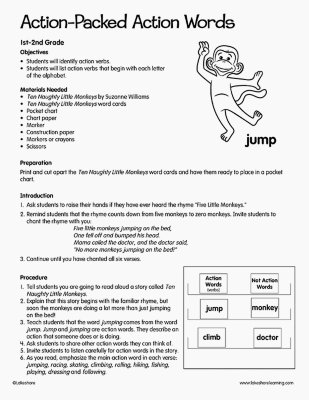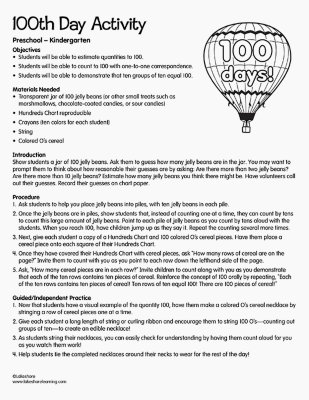Narrow by Grade
Grade
27 results for "counting"
Objectives
• Infants will show interest in shared reading experiences and looking at books.
• Infants will build vocabulary.
• Infants will develop memory and listening skills.
Objectives
- Children will develop eye/hand coordination.
- Children will recognize numbers.
- Children will participate in cooperative play.
Objectives
• Toddlers will count.
• Toddlers will identify numbers and quantities.
• Toddlers will develop fine motor skills.
Objective CCSS Math: Counting & Cardinality K.CC.C.6: Identify whether the number of objects in one group is greater than, less than or equal to the number of objects in another group, e.g., by using matching and counting strategies. Materials Needed Document Camera Penguin counters reproducible Colorful winter scarves Paper Classroom Pencils Polar Bear Compare reproducible
View Lesson PlanObjectives
- Children will sort objects by attribute.
- Children will recognize shapes.
- Children will count.
Objectives
• Toddlers will be introduced to shapes.
• Toddlers will develop early sorting skills.
• Toddlers will count quantities.
Objectives
• Toddlers will be introduced to one-to-one correspondence.
• Toddlers will count quantities.
• Toddlers will develop fine motor skills.
